 W
WSantiago Almeida was a Texas musician influential in the development of the musical genres of tejano and conjunto.
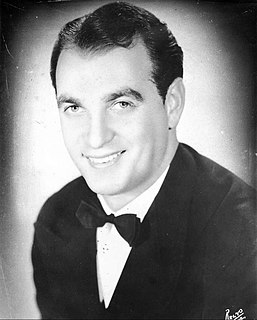 W
WMitchell "Mitch" Ayres was an orchestra leader, music arranger, composer and performer. He is best known for his many years of work with Perry Como on radio, records, and television and as the musical conductor for The Hollywood Palace.
 W
WBig Bill Broonzy was an American blues singer, songwriter and guitarist. His career began in the 1920s, when he played country blues to mostly African-American audiences. Through the 1930s and 1940s he successfully navigated a transition in style to a more urban blues sound popular with working-class African-American audiences. In the 1950s a return to his traditional folk-blues roots made him one of the leading figures of the emerging American folk music revival and an international star. His long and varied career marks him as one of the key figures in the development of blues music in the 20th century.
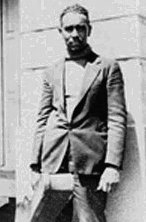 W
WArmenter Chatmon, known as Bo Carter, was an early American blues musician. He was a member of the Mississippi Sheiks in concerts and on a few of their recordings. He also managed that group, which included his brothers Lonnie Chatmon on fiddle and, occasionally, Sam Chatmon on bass and their friend Walter Vinson on guitar and lead vocals.
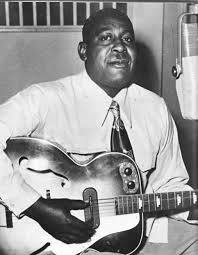 W
WArthur William "Big Boy" Crudup was an American Delta blues singer, songwriter and guitarist. He is best known, outside blues circles, for his songs "That's All Right" (1946), "My Baby Left Me" and "So Glad You're Mine", later recorded by Elvis Presley and other artists.
 W
WWalter Davis was an American blues singer, pianist, and songwriter who was one of the most prolific blues recording artists from the early 1930s to the early 1950s.
 W
WReverend J.M. Gates was an American preacher who recorded sermons and gospel songs extensively between the mid-1920s and 1940s. Recording over 200 sides in his career, Gates was one of the most prolific preachers of the pre-war era, and was largely responsible for the popularity in recorded sermons. Among the Reverend's most successful sermons, include "Death's Black Train Is Coming", "I'm Gonna Die with the Staff in My Hand"", and "Death Might Be Your Santa Claus".
 W
WThe Golden Gate Quartet is an American vocal group. It was formed in 1934 and, with changes in membership, remains active.
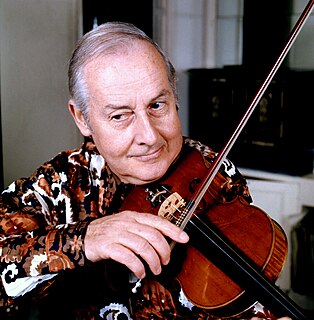 W
WStéphane Grappelli, born Stefano Grappelli, was a French-Italian jazz violinist who founded the Quintette du Hot Club de France with guitarist Django Reinhardt in 1934. It was one of the first all-string jazz bands. He has been called "the grandfather of jazz violinists" and continued playing concerts around the world well into his eighties.
 W
WLionel Leo Hampton was an American jazz vibraphonist, pianist, percussionist, and bandleader. Hampton worked with jazz musicians from Teddy Wilson, Benny Goodman, and Buddy Rich to Charlie Parker, Charles Mingus, and Quincy Jones. In 1992, he was inducted into the Alabama Jazz Hall of Fame, and was awarded the National Medal of Arts in 1996.
 W
WJames "Stump" Johnson was an American blues pianist and singer from St. Louis.
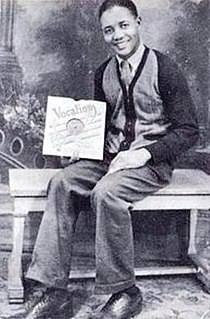 W
WCurtis Jones was an American blues pianist.
 W
WThe King Sisters were an American big band-era vocal group consisting of six sisters: Alyce, Donna, Luise, Marilyn, Maxine, and Yvonne King.
 W
WRobert Lockwood Jr. was an American Delta blues guitarist, who recorded for Chess Records and other Chicago labels in the 1950s and 1960s. He was the only guitarist to have learned to play directly from Robert Johnson. Robert Lockwood was one of the first professional black entertainers to appear on radio in the South, on the King Biscuit Time radio show. Lockwood is known for his longtime collaboration with Sonny Boy Williamson II and for his work in the mid-1950s with Little Walter.
 W
WNarciso Martínez, whose nickname was El Huracan del Valle, began recording in 1935 and is the father of conjunto music. The Spanish word conjunto means 'group' and in El Valle de Tejas that means accordion, bajo sexto, and contrabajo. The same year, he and Santiago Almeida recorded their first 78 rpm record containing the polka "La Chicharronera" and the schottishche "El Tronconal" for Bluebird Records, which quickly became a success.
 W
WBlind Willie McTell was a Piedmont blues and ragtime singer and guitarist. He played with a fluid, syncopated fingerstyle guitar technique, common among many exponents of Piedmont blues. Unlike his contemporaries, he came to use twelve-string guitars exclusively. McTell was also an adept slide guitarist, unusual among ragtime bluesmen. His vocal style, a smooth and often laid-back tenor, differed greatly from many of the harsher voices of Delta bluesmen such as Charley Patton. McTell performed in various musical styles, including blues, ragtime, religious music and hokum.
 W
WLydia Mendoza was an American guitarist and Spanish-language singer of Tejano, conjunto, and traditional Mexican-American music. Historian Michael Joseph Corcoran has stated that she was "The Mother of Tejano Music", an art form that is the uniquely Texas cultural amalgamation of traditional Mexican, Spanish, German and Czech musical roots. She recorded on numerous labels over the course of her six-decade career of live performing. The aggregate total of her records number an estimated 200 different Spanish-language songs on at least 50 LP record albums. In 1977, she performed at the Inauguration of President Jimmy Carter, as part of the line-up for the Inaugural Folk Dance and Concert. Her most well-known tune was "Mal Hombre", a song she had heard as a child.
 W
WAlton Glenn Miller was an American big-band trombonist, arranger, composer, and bandleader in the swing era. He was the best-selling recording artist from 1939 to 1942, leading one of the best-known big bands. Miller's recordings include "In the Mood", "Moonlight Serenade", "Pennsylvania 6-5000", "Chattanooga Choo Choo", "A String of Pearls", "At Last", "(I've Got a Gal In) Kalamazoo", "American Patrol", "Tuxedo Junction", "Elmer's Tune", and "Little Brown Jug". In just four years Glenn Miller scored 16 number-one records and 69 top ten hits—more than Elvis Presley and the Beatles did in their careers.
 W
WGlenn Miller and His Orchestra was an American swing dance band formed by Glenn Miller in 1938. Arranged around a clarinet and tenor saxophone playing melody, and three other saxophones playing harmony, the band became the most popular and commercially successful dance orchestra of the Swing era and one of the greatest singles charting acts of the 20th century.
 W
WLizzie Douglas, known as Memphis Minnie, was a blues guitarist, vocalist, and songwriter whose recording career lasted for over three decades. She recorded around 200 songs, some of the best known being "Bumble Bee", "Nothing in Rambling", and "Me and My Chauffeur Blues".
 W
WVaughn Wilton Monroe was an American baritone singer, trumpeter, big band leader, actor, and businessman, who was most popular in the 1940s and 1950s. He has two stars on the Hollywood Walk of Fame, one for recording and another for radio performance.
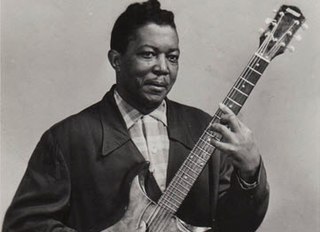 W
WRobert Lee McCollum was an American blues musician who played and recorded under the pseudonyms Robert Lee McCoy and Robert Nighthawk. He was the father of the blues musician Sam Carr. Nighthawk was inducted into the Blues Hall of Fame in 1983.
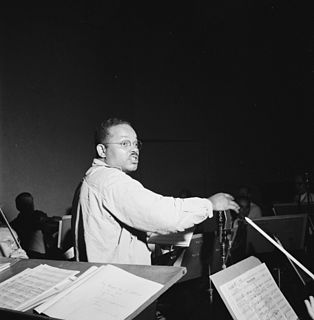 W
WMelvin James "Sy" Oliver was an American jazz arranger, trumpeter, composer, singer and bandleader.
 W
WOran Thaddeus "Hot Lips" Page was an American jazz trumpeter, singer, and bandleader. He was known as a scorching soloist and powerful vocalist.
 W
WRobert Petway was an American blues singer and guitarist. He recorded only 16 songs, but it has been said that he was an influence on many notable blues and rock musicians, including John Lee Hooker, Muddy Waters, and Jimi Hendrix. There is only one known picture of Petway, a publicity photo from 1941. His birth name may have been Pettyway, Petaway, or similar.
 W
WJames Charles Rodgers was an American singer-songwriter and musician who rose to popularity in the late 1920s. Widely regarded as "the Father of Country Music", he is best known for his distinctive rhythmic yodeling. Unusual for a music star of his era, Rodgers rose to prominence based upon his recordings, among country music's earliest, rather than concert performances – which followed to similar public acclaim.
 W
WRoosevelt Sykes was an American blues musician, also known as "The Honeydripper".
 W
WDick Todd was a Canadian singer, most active from the 1930s to 1950s. He was nicknamed the Canadian Crosby, due to his supposed vocal similarity to Bing Crosby, and was born in Montreal.
 W
WHenry "Mule" Townsend was an American blues singer, guitarist and pianist.
 W
WRobert Clifford Brown, known professionally as Washboard Sam, was an American blues musician and singer.
 W
WWilliam "Casey Bill" Weldon was an American country blues musician.
 W
WWilliam Bunch, known as Peetie Wheatstraw, was an American musician, an influential figure among 1930s blues singers. The only known photograph of him shows him holding a National brand tricone resonator guitar, but he played the piano on most of his recordings.
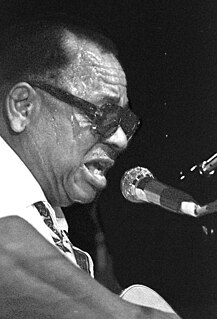 W
WJoseph Lee "Big Joe" Williams was an American Delta blues guitarist, singer and songwriter, notable for the distinctive sound of his nine-string guitar. Performing over four decades, he recorded the songs "Baby Please Don't Go", "Crawlin' King Snake" and "Peach Orchard Mama", among many others, for various record labels, including Bluebird, Delmark, Okeh, Prestige and Vocalion. He was inducted into the Blues Hall of Fame on October 4, 1992.
 W
WJohn Lee Curtis "Sonny Boy" Williamson was an American blues harmonica player, singer and songwriter. He is often regarded as the pioneer of the blues harp as a solo instrument. He played on hundreds of recordings by many pre–World War II blues artists. Under his own name, he was one of the most recorded blues musicians of the 1930s and 1940s and is closely associated with Chicago producer Lester Melrose and Bluebird Records. His popular songs, original or adapted, include "Good Morning, School Girl", "Sugar Mama", "Early in the Morning", and "Stop Breaking Down".